Chiropractic Adjustment in Spain
Search and Compare the Best Clinics and Doctors at the Lowest Prices for Chiropractic Adjustment in Spain

Find the best clinics for Chiropractic Adjustment in Spain
No pricing info available
Singapore offers the best prices Worldwide
Price: $ 44
From 3 verified reviews
Carole Bradshaw, 16 March 2020
Very professional and doesn't keep you returning for the sake of it. His aim is to get you fit and able to return to normal as quickly and safely as possible. Excellent bedside manner a gentleman in very way. He can speak a number of languages well, these definitely include French, Spanish and English. Prices are very reasonable.
From 3 verified reviews
Grisel Vasquez, 28 August 2020
2 years ago I had insoles, my back pains were horrible, I almost always limped, my rules were very abundant, I also suffered from my stomach and the truth is that my life has improved a lot, recommended 100%, I no longer have templates, my rules are normal my stomach great
From 32 verified reviews
Raúl GR, 22 September 2020
Se realizan radiografías previas a los tratamientos?.Tengo dudas sobre la quiropráctica por las noticias que se escuchan/leen en los medios de accidentes cardiovasculares etc, y en una ocasión indicaron que este hecho lo pueden evitar previamente comprobando la integridad de la columna. Es esto cierto?. En caso de ser así, realizan estas medidas preventivas para evitar problemas MAYORES. Gracias. Saludos.
Sarria Quiropractica, located in Carrer del Dr Roux, Barcelona, Spain offers patients Chiropractic Adjustment procedures among its total of 3 available procedures, across 1 different specialties. Currently, there's no pricing information for Chiropractic Adjustment procedures at Sarria Quiropractica, as all prices are available on request only. All procedures and treatments are undertaken by the lead specialist at the Hospital, and they are not accredited by any recognized accreditations institutes
- Home
- Spain
Compare Before & After Photos of _procedure_photos.phpChiropractic Adjustment
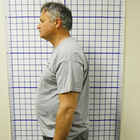
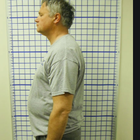
Full-side view
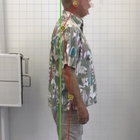
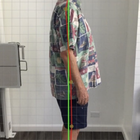
Full-side view
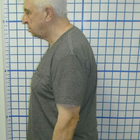
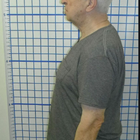
Full-side view


Full-side view
WHY US?
At Medijump, we're making medical easy. You can search, compare, discuss, and book your medical all in one place. We open the door to the best medical providers worldwide, saving you time and energy along the way, and it's all for FREE, no hidden fees, and no price markups guaranteed. So what are you waiting for?

Free

Best Price

Widest Selection

Risk-Free
What you need to know about Chiropractic Adjustment in Spain

A chiropractic adjustment, also known as spinal manipulation, is a procedure that is performed to improve spinal motion and enhance the body’s physical function by bringing the bones of a joint back to their normal, natural position. The procedure is performed by trained specialists (chiropractors) who use their hands or a small instrument to apply a controlled, sudden directional thrust into a spinal joint. Besides chiropractors, physical therapists and osteopathic physicians may be trained and licensed to perform chiropractic adjustment as well.
Some of the most common conditions for chiropractic adjustment are low back pain, neck pain, and headache.
What is the cost of Chiropractic Adjustment in Spain?
Several variables, including the intricacy of the patient's illness, the chiropractor's experience, and the location of the clinic, can have a considerable impact on the price of the Chiropractic Adjustment in Spain. Budgeting for this treatment must take these things into account. Despite the cost, keep in mind that this is a safe, all-natural therapy option that could spare you from needing to undergo costly procedures or take prescription medication for an extended period of time.
What does a Chiropractic Adjustment Procedure Involve?
During a chiropractic adjustment, you will lie down on a specifically designed chiropractic table so the chiropractor can administer treatment. Your position on the table can vary depending on your problem or diagnosis. Most often, the chiropractor will ask you to lie face down. The chiropractor will use their hands to apply a controlled, directional force to a joint. This movement is designed to push the joint beyond its usual range of motion. You may hear cracking or popping sounds as your joints are moved by the chiropractor during a treatment session.
How Long Should I Stay in Spain for a Chiropractic Adjustment Procedure?
A typical Chiropractic Adjustment session takes around 30 minutes to an hour, depending on the complexity of the condition being treated. Since the procedure is non-invasive and has a minimal recovery period, you can leave the clinic immediately after the session. A chiropractic adjustment may require a series of visits, usually around 6 to 10 visits until you attain maximum improvement. You can travel to Spain multiple times for each visit, or you can stay in the area until you complete all treatment sessions.
What's the Recovery Time for Chiropractic Adjustment Procedures in Spain?
The recovery time varies for one person to another. In general, it is recommended that you rest for at least a day or two after each session of chiropractic adjustment, especially if you experience minor side effects, such as fatigue, headache, or pain in the parts of the body that were treated. You may also need to avoid strenuous activity until your condition is fully healed. Your chiropractor will give you a detailed recovery timeline.
What sort of Aftercare is Required for Chiropractic Adjustment Procedures in Spain?
While receiving a Chiropractic Adjustment doesn't necessitate a specific aftercare routine, following certain guidelines can amplify its benefits and support overall. Your chiropractor will give you specific aftercare instructions which may include:
-
Drink plenty of water. Keep drinking more than the normal amount for several days to keep your body properly functioning and healthy.
-
Keep moving. Avoid sitting for long periods of time and try going for a long walk or take a bike ride. If you need to go back to work, it is best that you utilize a standing desk.
-
Move carefully. While you need to stay active, you should not overdo it.
-
Do the exercises that your chiropractor gives you.
What's the Success Rate of Chiropractic Adjustment Procedures in Spain?
According to the National Center for Complementary and Integrative Health (NCCIH), chiropractic adjustment has been proven to provide relief for mild and moderate low back pain. The success rate of Chiropractic Adjustment is quite high, with studies showing approximately 80% of patients experience relief from their symptoms. Many patients in Spain have reported significant improvements in their health, mobility, and quality of life after receiving chiropractic adjustments. Keep in mind, however, that success rates can vary depending on the individual's health conditions and how they respond to the treatment.
Are there Alternatives to Chiropractic Adjustment Procedures in Spain?
Massage therapy, exercise, and physical therapy offer similar results to chiropractic adjustment. Other alternatives to chiropractic adjustment include painkillers, spinal fusion surgery, or nerve treatment.
It's important to remember that what works best vary from person to person, and sometimes a combination of treatments is most effective. Make sure to consult your doctor for the best treatment for your specific case. Your health should always be the top priority, and there's no one-size-fits-all solution to any condition.
What Should You Expect Before and After the Procedure
Before the Chiropractic Adjustment, your chiropractor will perform a comprehensive assessment to understand your health condition better. This includes a physical examination, medical history review, and possibly, imaging tests. Understanding your Health Conditions and issues in depth helps the chiropractor to customize a treatment plan that suits your needs.
After the procedure, it's common to feel some immediate relief. However, some patients might experience minor side effects, such as discomfort in the treated area, headaches, or fatigue. These symptoms usually go away within a few hours or days. Your condition will likely improve, the pain should disappear, and you will feel reenergized. Generally, a successful chiropractic adjustment will improve your quality of life
What are the Potential Risks of Chiropractic Adjustment?
Overall, the procedure is considered safe. Minor and temporary side effects (headache, sore joints, dizziness, fatigue) occur in 23% to 83% adult patients. Serious risks that can be debilitating are very rare, ranging from 1 per 2 million adjustments and 13 per 10,000 patients. These serious risks include:
-
Spinal cord injury
-
Spinal disk injury
-
Stroke
-
Cauda equina syndrome.
Can children and teens receive Chiropractic Adjustment?
Indeed, youngsters and adolescents can securely undergo Chiropractic Adjustment. Chiropractic care is experiencing heightened popularity as a precautionary healthcare approach amongst budding populations, serving as a boon to their developing bodies while fostering salubrious habits. This treatment can assist with posture-related concerns, sporting traumas, back and neck discomfort, and events extend to conditions like asthma and ear infections.
Is Chiropractic Adjustment safe for pregnant women?
Yes, it is widely recognized that expecting women can safely undergo chiropractic adjustments. Numerous pregnant women seek chiropractic care to address common discomforts like sciatica and backaches. It can expedite labor and childbirth duration, manage nausea symptoms, sustain a healthier pregnancy, and potentially prevent a caesarean delivery. Nonetheless, it's indispensable to always consult with your doctor prior to undergoing any medical treatments during pregnancy.
The techniques used by chiropractors while administering adjustments on pregnant patients are designed to avoid abdominal pressure. They also provide secure and beneficial prenatal exercises and stretches. To ensure the safest and most effective treatment, it's crucial to furnish your chiropractor with a precise and thorough medical history, inclusive of details pertaining to your pregnancy.
Whilst the information presented here has been accurately sourced and verified by a medical professional for its accuracy, it is still advised to consult with your doctor before pursuing a medical treatment at one of the listed medical providers
No Time?
Tell us what you're looking for and we'll reachout to the top clinics all at once
Enquire Now

Popular Procedures in Spain
Prices Start From $400

Prices Start From $21

Recommended Medical Centers in Spain for Chiropractic Adjustment

- Interpreter services
- Translation service
- Religious facilities
- Medical records transfer
- Medical travel insurance
- Health insurance coordination
- TV in the room
- Safe in the room
- Phone in the room
- Private rooms for patients available

- Interpreter services
- Translation service
- Religious facilities
- Medical records transfer
- Medical travel insurance
- Health insurance coordination
- TV in the room
- Safe in the room
- Phone in the room
- Private rooms for patients available

- Interpreter services
- Translation service
- Religious facilities
- Medical records transfer
- Medical travel insurance
- Health insurance coordination
- TV in the room
- Safe in the room
- Phone in the room
- Private rooms for patients available

- Interpreter services
- Translation service
- Religious facilities
- Medical records transfer
- Medical travel insurance
- Health insurance coordination
- TV in the room
- Safe in the room
- Phone in the room
- Private rooms for patients available

- Interpreter services
- Translation service
- Religious facilities
- Medical records transfer
- Medical travel insurance
- Health insurance coordination
- TV in the room
- Safe in the room
- Phone in the room
- Private rooms for patients available

- Interpreter services
- Translation service
- Religious facilities
- Medical records transfer
- Medical travel insurance
- Health insurance coordination
- TV in the room
- Safe in the room
- Phone in the room
- Private rooms for patients available

- Interpreter services
- Translation service
- Religious facilities
- Medical records transfer
- Medical travel insurance
- Health insurance coordination
- TV in the room
- Safe in the room
- Phone in the room
- Private rooms for patients available

- Interpreter services
- Translation service
- Religious facilities
- Medical records transfer
- Medical travel insurance
- Health insurance coordination
- TV in the room
- Safe in the room
- Phone in the room
- Private rooms for patients available

- Interpreter services
- Translation service
- Religious facilities
- Medical records transfer
- Medical travel insurance
- Health insurance coordination
- TV in the room
- Safe in the room
- Phone in the room
- Private rooms for patients available

- Interpreter services
- Translation service
- Religious facilities
- Medical records transfer
- Medical travel insurance
- Health insurance coordination
- TV in the room
- Safe in the room
- Phone in the room
- Private rooms for patients available
Chiropractic Adjustment in and around Spain
About Spain
Historic Spain is home to the third-highest number of UNESCO World Heritage Sites, after Italy and China. Part of the Iberian Peninsula, along with Portugal, Spain also shares borders with France and the less well-known, Andorra. The country itself is made up of several regions, both on the mainland and out at sea, with the Canary Islands closer to Morocco than Spain - they are located in the Atlantic Ocean, whilst the Balearic Islands are a little closer to home, in the Mediterranean Sea. On the mainland there is Central Spain, home to the capital, Madrid, Catalonia in the East, home to the second city, Barcelona, and the Basque Country in the North, to name but a few.
Spain sees an estimated 100,000 medical tourists each year, many of which travel for Chiropractic Adjustment procedures. The biggest target market is from the UK, accounting for one in four of Spain's 60m annual tourists. An excellent healthcare system combined with warm temperatures and competitive prices means that Spain is now one of the more popular destinations in Europe for medical tourism. The most popular procedures tend to be cosmetic surgery, fertility treatments, bariatric surgery, cardiac surgery, orthopedics, urology, and bone marrow transplants.
Popular Parts of Spain
Spain has diverse landscapes, dynamic cities, influential art, and delightful food.
- Madrid is the capital of Spain. Modern infrastructure and historic neighborhoods blend nicely in the city. Known for its glorious fashion, food, and nightlife, the city has a lively spirit. Rest in El Retiro Park under the sun or take a guided tour in Palacio Real. Tourists who love sports can watch a Real Madrid soccer match.
- Barcelona has a plethora of attractive architecture, unique food beautiful beaches, and a vibrant nightlife. It is the most popular tourist destinations in the country. Visit Picasso Museum, Enjoy Gaudi’s Architecture the church of the Sagrada Família, or visit the Barcelona History Museum and enjoy the beach.
- Valencia is Spain’s third-largest city. The city is filled with an array of art nouveau buildings as well as Gothic and Renaissance monuments. Try all the food that the city offers, especially the famous paella. Be inspired by the stunning Cuidad de las Artes y las Ciencias, a massive building in the old Turia riverbed.
- Palma de Mallorca is a very welcoming city for international tourists. It has a number of historical attractions, Gothic churches, and the beautiful Mediterranean Sea at its feet. Shopping and gastronomic scenes are two of the best things in the city. Tourists can relax in the seafront cafés after a long day.
- Seville is a stunning artistic, cultural, and financial capital of southern Spain. Being a big university town, it has a very youthful vibe everywhere. Spend a day exploring Parque de Maria Luisa, tour Casa de Pilatos, get lost in the maze of Jewish Quarter’s small streets, and discover what the town has to offer on a bike.
- Ibiza is known to have some of the best nightclubs in the world. It is a beautiful island with dozens of amazing things to discover.
Weather and Climate in Spain
Spain has wonderful weather all year-round. Summer starts from June to August and tends to be nice. Tourists can expect warm and sunny weather. The temperature can get as high as 30 °C, sometimes even higher. Summer is the peak season for tourism so prices can increase by up to 50%.
Spring (April to May) and Autumn (September to October) are great times to visit. The weather is mild and perfect to do outdoor activities, although sometimes it can be unpredictable. The country is not as crowded as during summertime.
Winter in Spain is cold but the temperature does not drop too low. The average temperature is between 4 °C to 10 °C. Northern Spain and the mountainous areas sometimes experience snowfall and rain showers.
Getting Around in Spain
The main international airport in Spain is Adolfo Suárez Madrid-Barajas and Barcelona El Prat Airport. Madrid-Barajas is the largest airport in the country. It operates domestic and international flights. The airport connects Madrid with almost every country in the world. It serves several budget airlines such as Iberia Express, Ryanair, and EasyJet. It is the hub for Air Europa and Iberia.
Barcelona El Prat Airport also serves domestic and international connections with almost every country globally. Budget airlines such as Ryanair and WestJet operate flights from this airport. It is the hub for Level and Vueling.
To get to the city center, both airports provide taxis, buses, and metro. Taxis are the most convenient transportation mode but usually more expensive. Tourists who travel to Madrid are advised to buy the Madrid Tourist Travel Pass which can be used on any Metro, bus, or suburban train for just 5 EUR.
Spain has a well-designed public transportation network. Tourists can get around Spain by train. There are high-speed (AVE) and regular service trains (Talgo) for long-distance or medium distance travel, the fares are based on a 1st and 2nd class system. For short destinations, tourists can use local trains. It offers one class of seats and makes a lot of stops. 60-year-old and older travelers can get a discount between 25 to 40 percent for train tickets. Children under the age of 13 also qualified for discounts. Buses are another excellent option. Intercity buses are affordable, clean, and safe.
Renting a car gives more flexibility for tourists. International car rental agencies are widely available in the country. The highway system is easy for foreigners to follow. Parking can be quite hard in some cities and historic towns because it can get really crowded.
Taxis have a reasonable price. Spanish taxi drivers are usually trustworthy and don’t cheat. The taxi can be hailed on the street or from a taxi stand (parade de taxi). Available taxis have green lights or signs that say “libre” on them. Taxis run on meters, but if you’re traveling a long distance, you will have to agree on the fare in advance.
Tourist Visas in Spain
Citizens of the European Union, Norway, Liechtenstein, Iceland, and Switzerland can travel to Spain with their identity cards only. Citizens of Australia, Canada, Israel, Japan, the United States, and New Zealand are granted visa-free entry and can stay for up to 90 days. Other countries can check with their nearest Spanish embassy or consulate. Spain is a member of the Schengen Convention. If you hold a Schengen visa, you cannot extend it.
Additional Information
- Local Currency: the official currency is the euro (EUR). 1 USD converts to 0.85 EUR.
- Money & Payments: ATMs are available. Tourists can withdraw money from ATMs that display the relevant symbols such as Visa and MasterCard with a charge of 1.5% to 2%. Credit and debit cards can be used for most purchases, tourists will often be asked to show a passport. Tipping is optional, tourists can leave small change or up to 5% tip in restaurants.
- Local Language: the official language is Spanish. People in major tourist cities speak good English; it is also widely spoken in coastal resorts.
- Local Culture and Religion: The largest religion in the country is Catholic Christianity with 67.5% of the population follows the religion. There are small groups of Muslims, Jews, Buddhists, Hindus, Pagans, Taoists, and Bahá'ís.
- Public Holidays: Spain celebrates Christian holidays. Known as the country of fiestas and festivals, numerous festivals such as The Holy Week, La Tomatina, and The Fallas of Valencia are hosted annually.
Popular Searches
- Plastic Surgery in Thailand
- Dental Implants in Thailand
- Hair Transplant in Thailand
- Breast Augmentation Thailand
- Gastric Sleeve in Thailand
- Gender Reassignment Surgery in Thailand
- Laser Hair Removal in Bangkok
- Botox in Bangkok
- Dermatology in Bangkok
- Breast Augmentation in Bangkok
- Coolsculpting in Bangkok
- Veneers in Turkey
- Hair Transplant in Turkey
- Rhinoplasty in Turkey
- Stem Cell Therapy in Mexico
- Rhinoplasty in Mexico
- Liposuction in Mexico
- Coolsculpting in Tijuana
- Rhinoplasty in Korea
- Scar Removal in Korea
- Gastric Sleeve in Turkey
- Bone Marrow Transplant in India
- Invisalign in Malaysia
- Plastic Surgery in the Dominican Republic
- Tummy Tuck in the Dominican Republic
- Plastic and Cosmetic Surgery in Poland
- Rhinoplasty in Poland
- Hair Implant in Poland
- Dental Implants in Poland
- IVF in Turkey


